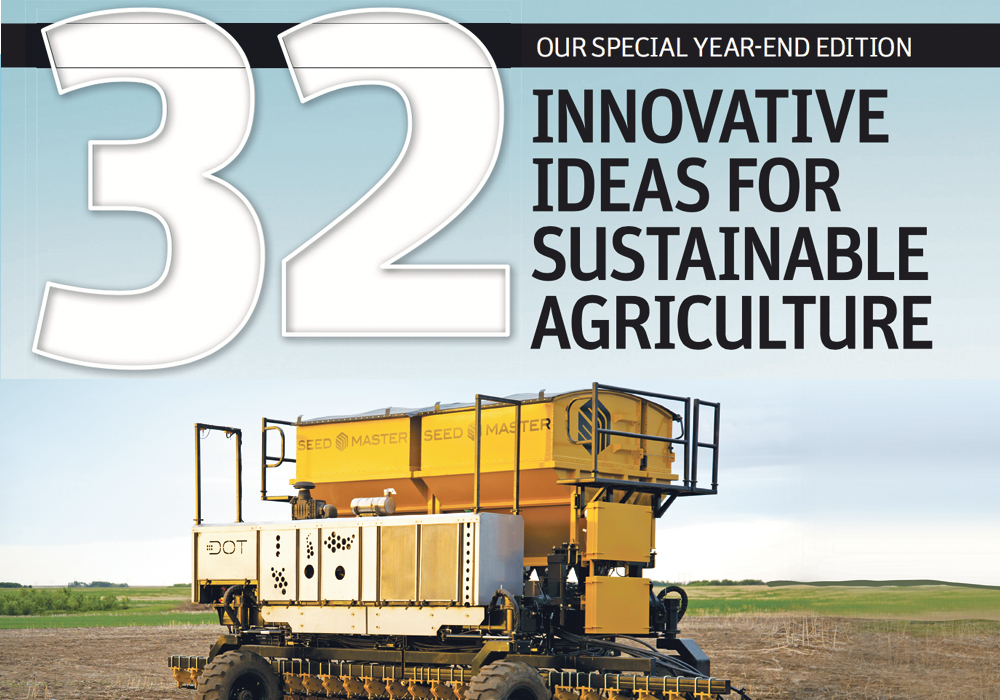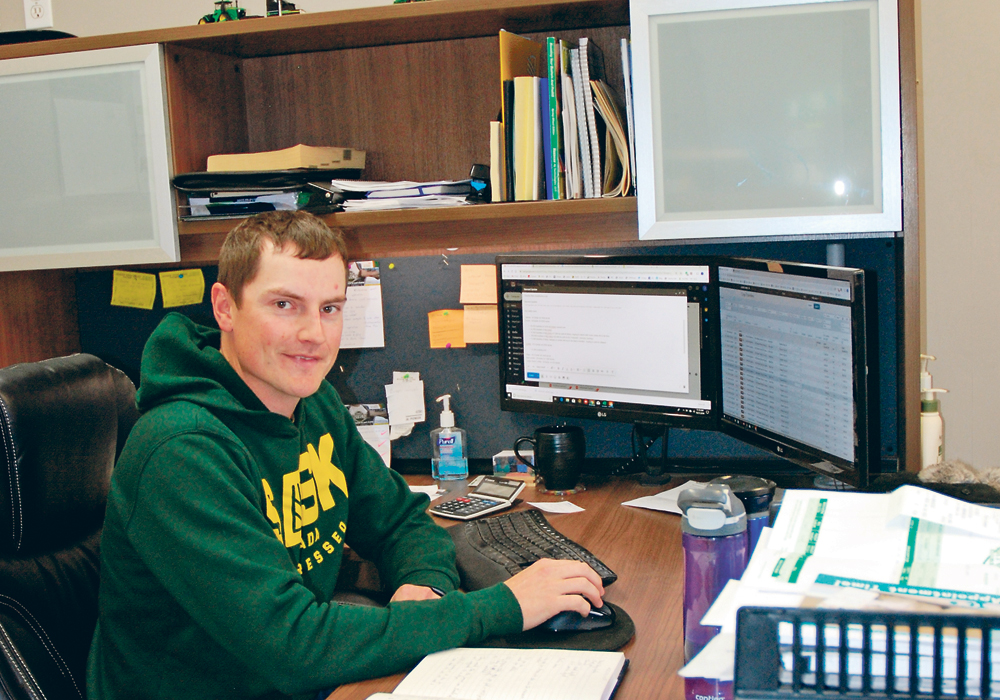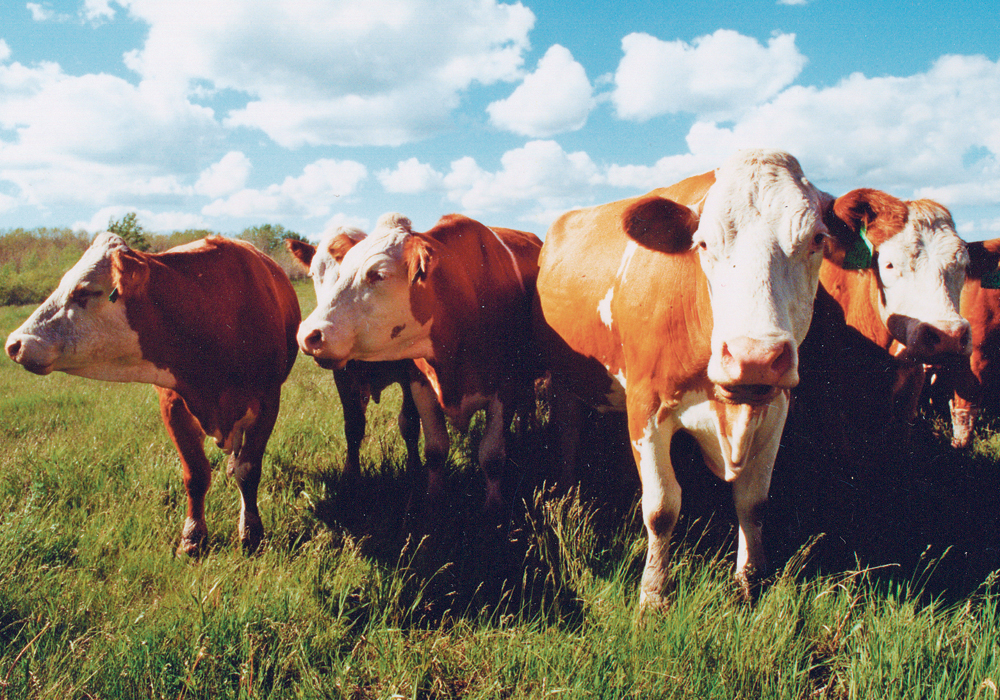CALGARY — Autonomous farming isn’t just a cool idea, it’s a big, iron reality coming to Western Canada this coming year.
And once it’s here, autonomous farming could begin sweeping away today’s machines the way cars and tractors swept away horses in North America’s cities and on its farmland.
“We are the tip of the iceberg.… We are going to change farming across the globe,” Leah Olson-Friesen, chief executive officer of DOT and SeedMaster, said as she told hundreds of farmers at the Farm Forum Event in Calgary about her company’s unmanned power unit.
Read Also

Farming Smarter receives financial boost from Alberta government for potato research
Farming Smarter near Lethbridge got a boost to its research equipment, thanks to the Alberta government’s increase in funding for research associations.
“We are selling our DOT units starting in 2019.”
Autonomous vehicles get a lot of press, but most focuses on robo-taxis being tested by companies like Apple, Uber and Google.
However, they are already a major factor in parts of the global mining industry, with Canada’s oil sands already seeing dozens of gigantic hauler trucks being operated remotely with projections that they’ll replace most of the directly piloted vehicles there within a few years.
And while many farmers might think the remote-controlled tractor is still just a neat idea or far-fetched laboratory project, Olson-Friesen was keen to lay out the commercial reality of her company’s technology. Not only will it look different, but it should change the economics of machinery-reliant crop production.
“We are making it cheaper to buy a power platform, and the implements are, relatively speaking, cheaper,” said Olson-Friesen, whose machine can already work as a seeder, sprayer and grain cart.
“A farmer will be able to move towards an autonomous farm quite quickly because on a cost-per-unit and a cost-per-acre of that unit, we will be below what the conventional farming is.”
The DOT machine is just one approach to autonomous operation in agriculture, but it challenges many existing assumptions in farm machinery.
Instead of pulling equipment, it carries it, which changes the power it requires and how it projects that power. It also operates as an interchangeable power supply for various implements, sliding into seeder, sprayer and grain cart implement attachments. Instead of needing multiple engines or an independent tractor to power each unit, the DOT can swap out its roles.
More implements are being tested and considered, such as land rollers and rock pickers, with most likely to be supplied by third party manufacturers.
The origin of this particular machine was in the seemingly unquenchable desire on the Prairies for increased efficiency and productivity. The chronic shortage of labour in western Canadian agriculture has been a major dynamic driving this interest, with Olson-Friesen saying most of the farmers hoping to get a DOT soon name labour scarcity as their greatest challenge.
“Necessity: that’s the mother of all innovation,” she said.
“When we are in a tough patch in the agriculture industry, like oil and mining, that’s when some of our greatest innovations come about.”
Her reference to the oil and mining industries arose because of the observations just made at Farm Forum Event about the experience of autonomous operations in the oil sands by Deborah Jaremko of Junewarren-Nickles Energy Group. She had noted that the autonomous truck manufacturers were estimating that tires might last 40 percent longer when operated autonomously because remote operation tended to lead to more gentle machinery operation.
For 2019, farmers who buy a DOT will be required to supervise it, Olson-Friesen said, because even though the system has been tested in both Canada and the United States, the way real farmers use it on real farms might create some unforeseen circumstances or challenges.
It will also only initially be sold to farmers within a couple of regions, where service can be quickly provided.
“We want to be there because it’s not just a new piece of equipment,” said Olson-Friesen.
The early adopters will see the technology develop, she said, with artificial intelligence helping analyze and develop the system as the machinery, the system and farmers interact.
As neat and new as the system may seem, and it was a popular topic at Farm Forum, its basis is in the permanent economic reality of farming, which is to make crop production a better prospect for the farmer.
“In the years to come we hope to ensure that our platform enables much more efficiency and is cost effective on your farm,” said Olson-Friesen.


















